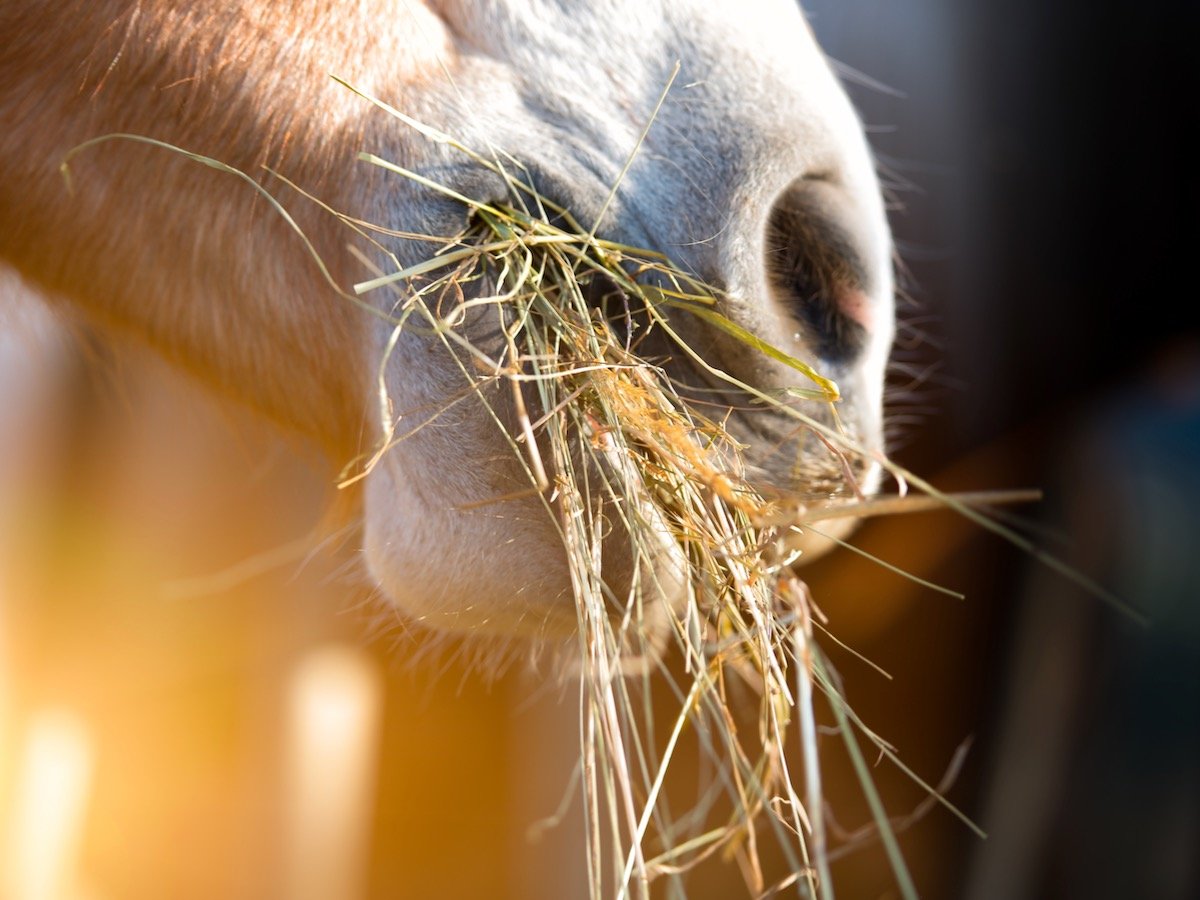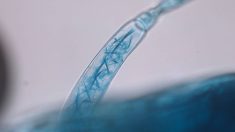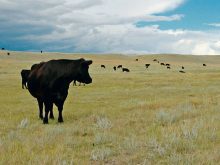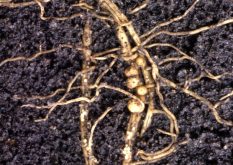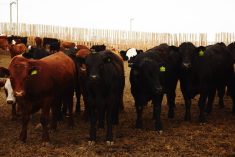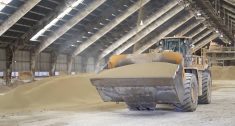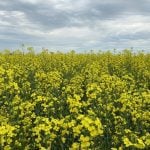Nitrogen goes makes up 80 per cent of the air that we breathe in the form of a very stable N2 gas. In my several years at university I majored in chemistry and my work on nitrogen was intensive, from its biological role to its key role in almost all military explosives.
Nitrogen is one of the most abundant and important of all elements but misunderstood by the general public. Nitrogen exists in three oxide and gaseous forms: nitrogen dioxide (NO2), nitrous oxide (N2O) and nitric oxide (NO). These three gaseous forms often confused me, despite my chemistry background, so do not blame crop production specialists for getting them cross-wired.
Nitrogen dioxide
Read Also

Gentle treatments for pain in the neck
Heading toward year-end, people unknowingly tense up against the cold and busyness, causing neck pain that can often be treated with appropriate support and gentle mobility, athletic therapist Kathlyn Hossack says.
NO2 is a reddish-brown gas that is poisonous and highly reactive. It’s a contributor to the haze often seen in cities with high traffic densities. In the presence of water, it quickly forms nitrous or nitric acid, which in contact with the soil rapidly becomes calcium or magnesium nitrate or other stable nitrate compounds. In nature it’s the usual gas that’s formed from lightning strikes, up to a few pounds per acre, when it’s washed into the soil by the accompanying rain or hail.
Nitrous oxide
N2O, well known to us as laughing gas, is a gas used in dentistry or medical surgery but its use is becoming restricted since it has become a drug now frequently used recreationally.
Its agricultural story is much more sinister, as the dreaded gas produced by cropland is some 300 times more potent than carbon dioxide as a contributor to global warming. It’s a very stable gas that takes more than 100 years to break down in the atmosphere. Up to seven per cent of global warming is attributed to this gas, whose significant source of origin is agricultural cropland.

Nitric oxide
Here I could say that NO means “yes.” This is a very important gas in human, animal and plant health. Nitric oxide is the molecule (gas) that regulates many systems in both animals and plants. It not only plays a number of key roles in your body but also in all plant growth. NO regulates such processes as seed germination, root development, grain and fruit production. Both plants and animals are able to synthesize NO from nitrogen compounds. Next time you go to the drugstore you will see very many nutrient supplements that claim to boost the NO level in your body to improve your health. You may expect lots of exciting research in future on the role and use of NO in plants and crop production systems and hence animal health.
It’s confusing, but you must distinguish between N2 (nitrogen), NO2 (nitrogen dioxide), N2O (nitrous oxide) and NO (nitric oxide) — in summary, a group of gases that can so easily be confusing even to specialists.
Nitrogen salts, such as nitrates and nitrites, are the foundations of the whole world’s biological system. Nitrogen is the key element in all foods and food production and as salts they can be totally essential or destructive, both as nitrites and nitrites.
All nitrogen compounds, whether organic or chemical, are basically very unstable. To fix nitrogen either in the form of nitrate, nitrite or ammonia takes a great deal of energy. For this reason, fixed nitrogen is the key element of almost all explosions. Semtex, TNT, dynamite, picric acid and countless other explosives in bombs, guns and rockets are nitrogen-based. The triple bond that holds N2 together is very strong, but the bond between nitrogen and other atoms is very weak and highly unstable, as in explosives.
Nitrates in food and crops
Nitrates are present in very many of the foods that we eat, such as bacon and cured meats where they function as preservatives. Such meats are usually salted with common salt and saltpeter, which is either sodium or potassium nitrate. I remember, as a youth, when a pig was killed on the farm, we had to rapidly cover the hams and sides with common salt and then rub in saltpeter to initiate the curing process. (Remember here that clostridium botulinum bacteria (botulin) produce a toxin that is millions of times more toxic than snake venom.)
In the actual process of curing the meats, the salt draws out the water and surface bacteria on the meat can convert the sodium or potassium nitrates to nitrites. It is these nitrites that are then converted to nitrosamines which are implicated as cancer-causing. Recent research, though, has shown that adding vitamin C (ascorbate) to the meat curing process promotes the conversion of nitrite to nitric oxide. As a consequence, nitrite levels in food have been significantly reduced to less than 100 parts per million (p.p.m.), resulting in much-reduced nitrosamines — the problem compound within the food.
Processed meats are not our only processed source of nitrates in food. Vegetables, such as beets, celery and broccoli, for example, may contain significant nitrate levels. It so happens that toxic nitrosamines can be formed in the human body if we ingest both nitrates and amines in our food, even if you are a vegetarian.
Nitrates, nitrites and livestock problems
Nitrates are present in all horticultural and field crop plants. Normally nitrates are taken up by plants and are primarily converted to plant protein. However, under unusual growing conditions such as a sudden severe frost on a rapidly growing forage crop or crops intended for hay or silage or a severe drought on well fertilized pasture, feeding problems can occur.
Cattle are much more likely than horses to experience nitrate or nitrite poisoning. When consumed by cattle, the nitrate levels, if high enough, cannot all be converted to protein and the excess nitrates or nitrites may enter the bloodstream, where they combine with the blood hemoglobin to produce methemoglobin, a form that cannot transport oxygen. Death can occur from asphyxiation. If you suspect nitrate poisoning, consult a veterinarian immediately for help.
If you suspect high nitrates in hay or forage, the nitrate levels will not dissipate over time but you may ration the amount fed to your cattle. Sheep and goats are also sensitive to high nitrate levels, but seem to be more tolerant than cattle. Horses are much more tolerant than ruminants such as cows, sheep and goats — but there are recorded cases of significant nitrate poisoning in horses. In the spring of 2001 in Kentucky, thousands of mares aborted their foals — and the cause was finally resolved to be the well fertilized pasture grasses in that state. The grass pastures were hit by unusually cold and even freezing weather that stopped grass growth but did not stop the accumulation of nitrates. The pasture grasses became unusually high in nitrates and nitrites that were taken up by the mares. The nitrate damages the hemoglobin in the red blood cells, preventing oxygen circulation, resulting in fetal death.
If harvested hay or forage is suspected to be high in nitrates, have them tested by any of several Prairie laboratories. It is generally accepted that the total dietary nitrate in dry matter should be no more than 5,000 p.p.m. or 0.5 per cent by weight. Over this level, high-nitrate hay or forage should be diluted by 50 per cent with other feed. Levels of 10,000 p.p.m. (one per cent) can cause death in cattle and should not be fed.
Cattle should not be allowed to graze on drought-stricken cropland high in nitrogen, nor on well fertilized pasture or late-seeded well fertilized crops heavily damaged by frost. Both instances can result in nitrite accumulation.
In this discussion on N and its oxides and chemical compounds I hope I have enlightened rather than confused you. Nitrogen, on the other hand, in its biological forms, is so incredibly diverse and complex that it would take textbooks to explain.


